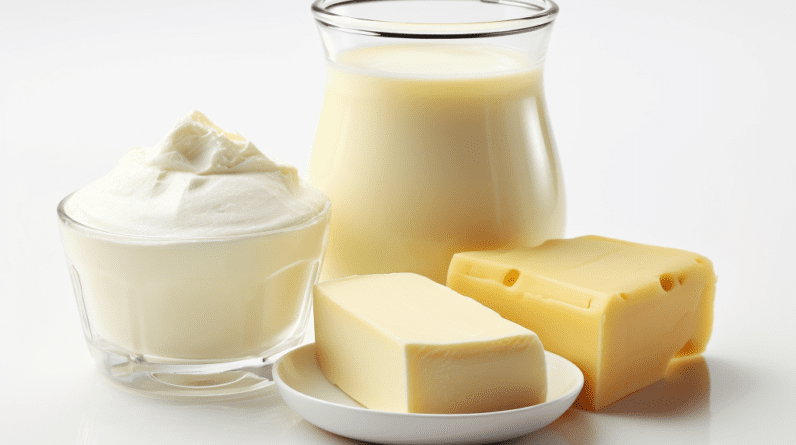
Ever sipped on a glass of wine and wondered why it had a particularly creamy or buttery taste?
The secret lies in a winemaking process known as malolactic fermentation.
But here’s a little surprise: it’s not technically fermentation.
Dive in to uncover more!
The Science Behind the Butteriness
Imagine you’re swirling that golden Chardonnay in your glass.
That rich buttery aroma?
Thank the bacteria for that.
They release an impactful compound named Diacetyl.
This little compound is the reason behind the buttery and creamy aromas in your wine.
But while you’d think it’s called fermentation, the term “malolactic fermentation” can be a tad misleading.
Why? Because it’s not exactly fermentation in the strictest sense.
Intrigued? Read on.
The Process of Malolactic Fermentation (MLF)
At the heart of MLF lies the conversion of tart malic acid into a softer, creamier lactic acid.
Picture this: the very same acid that’s in milk.
This process not only reduces wine’s acidity but also releases a dash of carbon dioxide.
But here’s where it gets exciting.
Forget yeast.
This isn’t their game.
Instead, a special kind of bacteria, namely Oenococcus oeni, steps in.
These bacteria feast on the malic acid in wine and, believe it or not, they “poop out” lactic acid.
The result? A wine with a texture that feels creamy, almost like a delicate oil caressing the middle of your tongue.
Yes, wine owes a lot to these little bacterial champions!
What Is the Purpose of Malolactic Fermentation?
Winemakers embrace MLF for a variety of reasons, but three key purposes stand out:
CHECK OUT THIS PERFECT CHARDONNAY GLASS!
Acid Reduction
The magic of MLF lies in its ability to decrease the wine’s acidity.
Since malic acid is tangier compared to the milder lactic acid, its conversion significantly drops the wine’s overall acidity. But here’s a catch.
Too much reduction can invite spoilage.
As a countermeasure, winemakers might reintroduce acidity by adding tartaric acid.
Flavor Enhancement
If you’ve ever tasted a wine and reveled in its buttery, creamy complexity, you’ve MLF to thank.
By tempering tart fruity flavors, MLF bestows wines with a full, smooth mouthfeel.
The result? Soft wines that glide down your palate, leaving a velvety impression.
Stability in Bottling
Ever opened a bottle of wine and found it a tad cloudy or mildly sparkling when it shouldn’t be?
That’s malolactic fermentation sneaking in post-bottling.
Ensuring wines undergo MLF before bottling is a preventive measure.
It not only preserves the wine’s clarity but also its desired carbonation level.

Wines That Experience MLF
Now, let’s talk wines.
Most red wines undergo MLF.
Think about the elegant pinot noir, for instance.
After its primary fermentation, it’s deliberately introduced to the conversion of malic acid to the creamier lactic acid.
But when we switch gears to white wines, the numbers dip.
Only about one-fifth of white wines embark on this transformative journey.
Only a select few, like Chardonnay and Viognier, embrace this process.
Want a quick tip?
If your wine feels creamy or oily in the middle, it might have experienced MLF.
Another clue is oak aging.
Wines aged in oak barrels often undergo MLF.
And for white wines that don’t want to lose their fragrant floral and citrus notes, they might only let a fraction undergo MLF. Clever, right?
Grapes such as chardonnay and cabernet sauvignon meld perfectly with the process, embracing the textural and aromatic changes.
On the other hand, wines made from grapes like riesling and gewürztraminer—often sweeter in nature—might shy away.
Their higher sugar content makes them less favorable candidates for MLF.
And did you know? The region and climate play influential roles in the winemaking decisions surrounding MLF.
In colder regions, where chilly temperatures can tilt grapes towards the acidic side, MLF is a welcome process.
Iconic wine regions such as Burgundy and Champagne frequently rely on malolactic fermentation to harmonize and balance their wines.
Malolactic fermentation, or MLF, is more than just a winemaking process.
It’s the bridge between the grapes and the velvety texture in wines.
Here’s to more discoveries and more delightful sips!
FAQ:
Q: Is malolactic fermentation only for red wines?
A: No, both reds and certain whites, like Chardonnay, can undergo MLF.
Q: Does malolactic fermentation affect the wine’s aroma?
A: Yes! It’s responsible for the buttery and creamy aromas in wines.
Q: Are wine grapes genetically modified?
A: No, wine grapes aren’t genetically modified, but some yeasts and bacteria used in winemaking have been.








